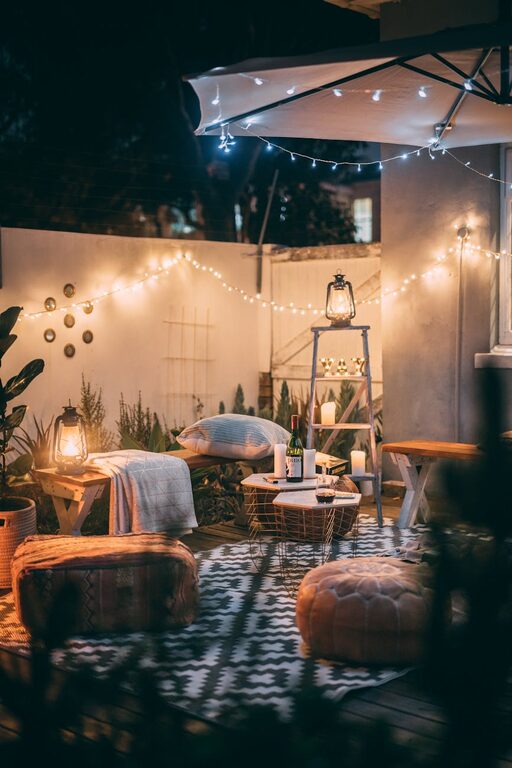Tips for Choosing Comfortable Home Lighting That Enhances Your Space

Creating a comfortable and inviting home environment goes beyond furniture and color schemes; lighting plays a crucial role in how a space looks and feels. Comfortable lighting can reduce eye strain, improve mood, and highlight the best features of your home. Choosing the right lighting involves balancing brightness, color, and placement to suit your lifestyle and preferences.
In this blog post, we’ll explore practical tips for choosing comfortable home lighting that enhances every room, helping you create a warm and welcoming atmosphere.
Understand Different Types of Lighting
Lighting is generally categorized into three main types, each serving a unique purpose:
1. Ambient Lighting
Ambient lighting provides overall illumination for a room. It’s the base layer of light, ensuring you can comfortably move around without straining your eyes. Examples include ceiling fixtures, chandeliers, or recessed lights.
2. Task Lighting
Task lighting focuses on specific areas where activities such as reading, cooking, or working are done. Desk lamps, under-cabinet kitchen lights, and vanity lights are typical examples.
3. Accent Lighting
Accent lighting highlights particular features within a room, such as artwork, plants, or architectural details. This type includes wall sconces and spotlights.
Tip: Combine these types thoughtfully for layered lighting that feels natural and comfortable.
Choose the Right Light Bulbs
The type of bulb you use greatly affects the comfort and mood of your lighting.
Consider Color Temperature
Bulbs come in different color temperatures measured in Kelvins (K), typically:
– Warm White (2700K-3000K): Produces a cozy, yellowish light ideal for living rooms and bedrooms.
– Neutral White (3500K-4100K): Offers a bright but soft light suitable for kitchens and bathrooms.
– Cool White/Daylight (5000K-6500K): Emulates natural daylight, great for task-intensive activities but can feel harsh for relaxing spaces.
Look for Dimmable Options
Using dimmable bulbs allows you to adjust light levels to your comfort, whether you’re hosting guests or winding down for the night.
Opt for Energy-Efficient Bulbs
LED bulbs use less energy and last longer than traditional incandescent bulbs, reducing your electric bill while maintaining quality lighting.
Prioritize Light Placement and Fixtures
Even the best bulbs can create uncomfortable lighting if poorly placed.
Avoid Direct Glare
Position lights so they don’t shine directly into your eyes. Use lampshades, frosted bulbs, or indirect lighting techniques like uplighting to soften the glow.
Use Multiple Light Sources
Multiple smaller light sources create a more balanced space than one single overhead light. For example, use a combination of ceiling lights, floor lamps, and table lamps.
Select Fixtures That Match Your Style
Your fixture’s design can complement your décor while distributing light effectively. Consider adjustable fixtures if flexibility is important.
Tailor Lighting to Room Function
Different rooms have different lighting needs:
Living Room
Use warm ambient lighting paired with task lights like reading lamps. Accent lights can draw attention to artwork or shelves.
Kitchen
Bright, neutral white lighting with strong task light over counters and stovetops will help you cook safely and efficiently.
Bedroom
Soft, warm lighting creates a relaxing environment. Include bedside lamps with adjustable brightness for reading.
Bathroom
Bright, neutral lighting around mirrors reduces shadows, making grooming easier.
Pay Attention to Lighting Control
Use Dimmer Switches
Dimmers give flexibility to set lighting moods. They’re especially useful in living and dining areas.
Smart Lighting Options
Smart bulbs and controls allow you to adjust colors and brightness from your phone or voice assistant, adding convenience and personalization.
Experiment with Natural Lighting
Maximize daylight by using sheer curtains or blinds that can be opened fully. Natural light reduces dependency on artificial bulbs and positively affects mood.
However, balance is key to avoid glare or overheating. Use window treatments to control the amount of natural light entering.
Test Before Committing
Before installing permanent fixtures or buying multiple bulbs, test lighting in your space:
– Try different bulbs in your lamps.
– Use plug-in fixtures temporarily.
– Observe how lighting looks at different times of day.
This hands-on approach ensures you choose lighting that truly feels comfortable.
Additional Tips for Comfortable Lighting
– Consider the height of fixtures: Lights placed too low or high can create discomfort.
– Use soft white bulbs in reading and relaxing zones: Cooler lights can feel too clinical.
– Maintain cleanliness: Dust on fixtures reduces light output.
– Keep switches accessible: This improves convenience and encourages proper lighting use.
Conclusion
Choosing comfortable home lighting is about balance—mixing the right types of lighting, selecting suitable bulbs, placing fixtures thoughtfully, and customizing controls. With these tips, you can create a home that feels warm, inviting, and perfectly lit for every activity.
Remember, lighting is not just functional; it’s a vital part of your home’s atmosphere. Take the time to experiment and find what works best for you!
